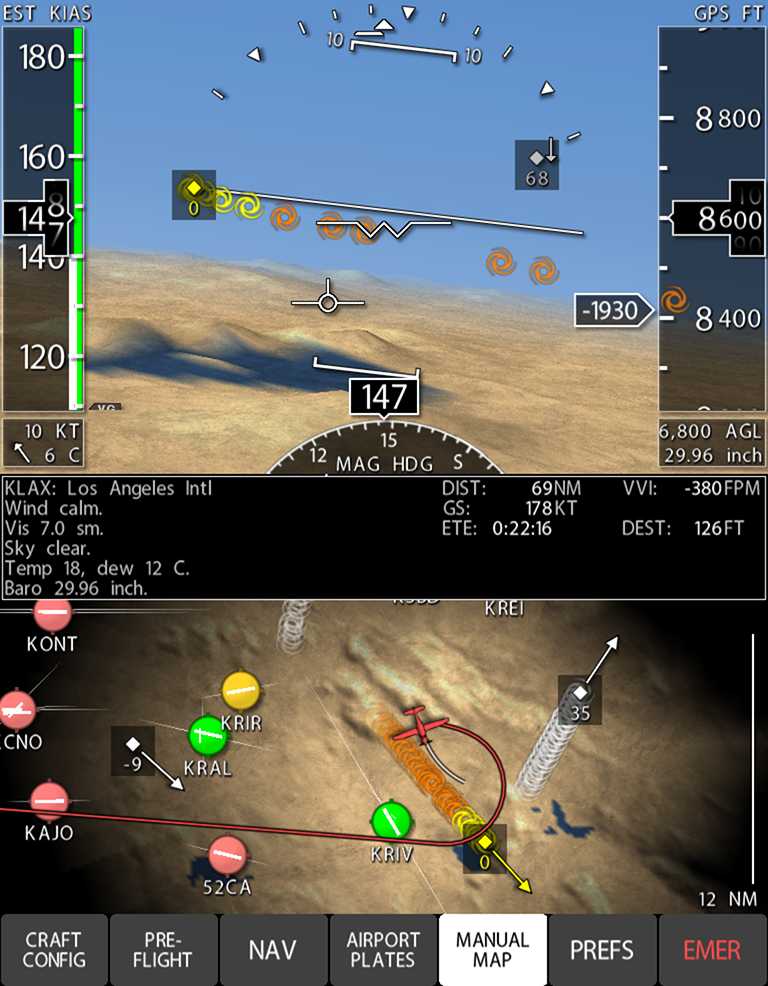X-Plane 11 flight-model improvements
January 5, 2017How To Make a Movie
August 15, 2017OK so about two weeks ago I was flying along at 16,500 in N844X coming out of a pretty major airport and an MD-80 sailed silently off my right side, opposite direction.
He was about a half mile away, maybe 500 feet above me, obviously inbound to the airport I had just left.
I enjoyed the silent view as he glided by and then got back to my usual scan.
About 2 minutes went by.
Then, suddenly: BANG!!!!
844X suddenly slammed be down into the seat with about 2 or 3 G’s of force, then slammed me up into the roof at negative G, then slammed me down into the seat again at 2 or 3 G’s.
Then continued as if nothing had happened.
It all happened in about ONE SECOND… NO POSSIBLE way to even think about reacting to it in any way at all.
I just sat there in the seat, amazed, my headset knocked into my lap, wondering if the plane was still structurally intact.
When the adrenaline wore off, I started to feel a steady aching in my neck from being thrown into the cockpit ceiling.
So here’s what happened: When I SAW the MD-80, he was drifting along harmlessly BESIDE ME (opposite direction).
BUT, unknown to me at the time, he must have CROSSED IN FRONT OF ME a few minutes earlier.
There was no way anyone could notice someone crossing their path while still several minutes ahead, so there is no way that I or anyone else could have seen this coming. The exact same thing would have happened to anyone. ATC never calls out that a plane has crossed the path that you will reach in several minutes.
Perhaps for this reason, wake turbulence is referred to as a ‘one-in-a-million’ event… but it isn’t.
I got hit hard with only about 2,500 hours of experience, and wake turbulence is not random. It is completely predictable.
And now Xavion shows it to you.
Here’s how:
As I was thinking about that encounter the next day, my neck still aching form the impact, a way to track wake turbulence with an iPad dawned on me: Wake turbulence always emits from airplanes. And thanks to ADS-B, we know where the airplanes are. The next step is obvious.
So now, starting with Xavion 1.83, if you have an ADS-B receiver, then Xavion will, as always, track the location and altitude of all other airplanes.
But now: Every 10 seconds, each of those airplanes “lays a little wake turbulence egg”, simply depositing it into the sky.
Over the next 4 minutes, those little wake turbulence “eggs” will sink at the sink rate that wake turbulence is known to sink at, and as well move with the wind, as wake turbulence does. (the wind, as well, comes from the nearest ADS-B weather report)
Each wake turbulence “egg” is plotted as a little rotating cyclone, both on the MAP (with altitude difference from you displayed, just like traffic) and on the PFD, so you can clearly see it on your PFD.
As well, the COLOR of the wake turbulence eggs is handled exactly like the color of TRAFFIC icons, going from white to yellow to orange to red as it gets closer to you in separation and altitude.
After 4 minutes, each little wake-turbulence “egg” is dissipated, and disappears from Xavion.
So, when people talk about wake turbulence detection with doppler radar and complicated things like that, they seem to have forgotten the obvious: Wake turbulence is laid by airplanes, descends at a known descent rate, and drifts with the wind… and we know where the airplanes are, so tracking wake turbulence is actually shockingly easy” Just pop them out of the airplanes and move them with the laws of physics.
So why doesn’t EVERYONE do it??
Well, we have it now anyway:
https://itunes.apple.com/us/app/xavion/id574203838?mt=8
